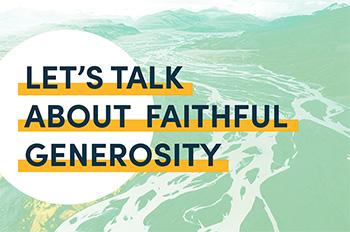The vibrancy of an institution depends on its sustainability over time.
Leaders often equate sustainability with money, and focus on short-term fundraising at the expense of long-term strategy. Designing a sustainable institution does, indeed, require financial capital, as well as four other types: human, intellectual, service and network capital. Focusing on the last four types often strengthens the ability to acquire financial capital.
A sustainable institution knows its mission and acquires and spends its capital in service of it. With that clear sense of purpose, institutional leaders can more wisely decide what needs to be pruned and what needs to grow to enhance the institution.
Exploring the idea
How to design a sustainable institution »
Theologian L. Gregory Jones, the dean of Duke Divinity School, writes that sustainable design depends on a logic of abundance, namely, that vibrant institutions are responsive to God’s abundant provision in creation.
To focus on mission, sometimes institutions must be pruned »
To enable growth, a leader needs to understand an institution’s “soul” and be willing to prune anything that doesn’t contribute to its thriving, Jones writes.
Capital is more than money »
Leadership adviser Laura Nichol shows how organizations can generate greater financial capital by focusing attention also, and to an extent more determinatively, on other forms of capital simultaneously.
Seeing the Idea in Practice

Achieving change by involving the community and building partnerships
Dubuque, Iowa, is striving to become a model of sustainability as part of an IBM public-private partnership. To do that, citizens, businesses and other institutions have been changing their behavior on a grand scale. Read more »

Vibrant institutions are not always marked by consistent growth
Gary Shorb, the CEO of Memphis’ Methodist Le Bonheur Healthcare, decided more than 10 years ago that to become more mission-driven as a church-related health system, his institution needed to decide what to stop doing and reallocate its resources. The result? Enhanced networks connecting people throughout Memphis with services from midwives to hospice and a more proactive and holistic focus on health throughout the community. Read more »

Building a network to walk alongside those in poverty
Good Works in Appalachian Ohio offers a shelter, long-term transitional housing, meals, a visitation program connecting seniors and young people, and help with household projects. But even more striking are the relationships within this close-knit community and the circle of giving and receiving that seems to touch all involved, from those assisted to the 25-member staff to the 1,100-person volunteer corps.
Read more »
Recommended resources to learn more
Culture Making
Journalist Andy Crouch makes the case that Christians must not just consume or condemn culture but create it.
Learn more about this recommendation »
Purchase this book »

Where Good Ideas Come From
Steven Johnson explores the importance of environments for generating creativity.
Learn more about this recommendation »
Purchase this book »

Reconciling All Things
Emmanuel Katongole and Chris Rice set the theological framework for Christian reconciliation and reorient us from an activist mentality to a journey of holiness into God’s embrace.
Learn more about this recommendation »
Purchase this book »

Better
Surgeon Atul Gawande reflects on innovation, improvisation and learning.
Learn more about this recommendation »
Purchase this book »

Human-Centered Design Tool Kit
Global design firm IDEO produced a free innovation guide for social enterprises that helps nonprofits and other institutions assess community needs, discover solutions and achieve financial sustainability.
Learn more about this recommendation »
Purchase this book »


